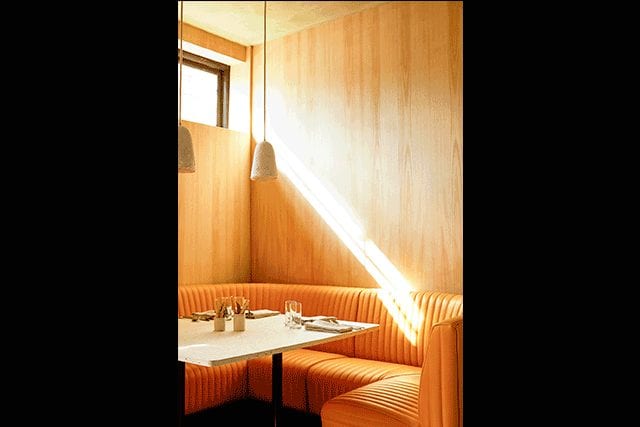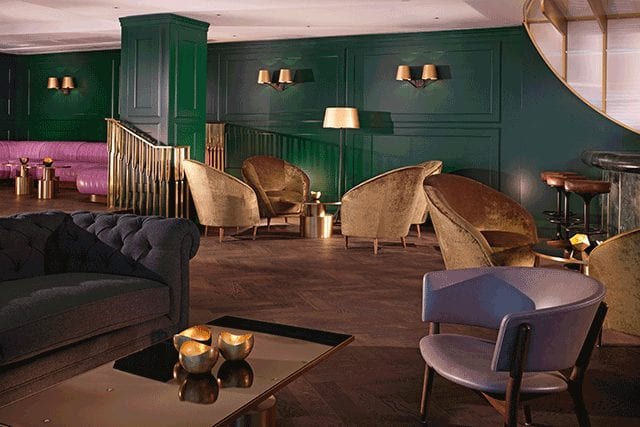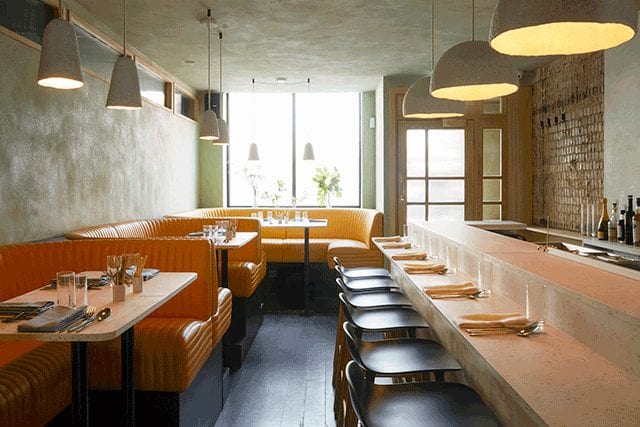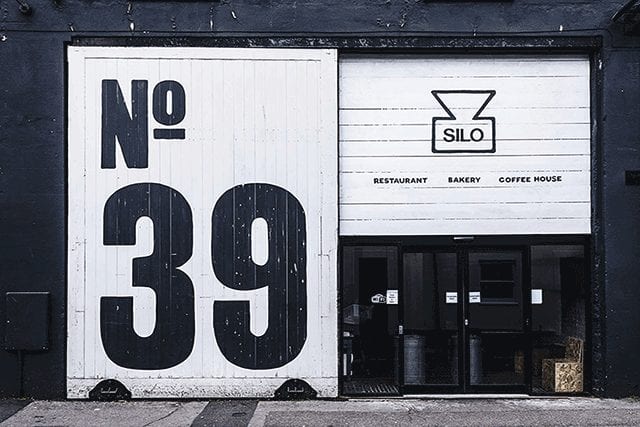Shortly after bartender Ryan Chetiyawardana shuttered White Lyan, his pioneering bottle-only cocktail joint in London’s Shoreditch neighborhood, the bilevel space morphed into something even more ambitious: Super Lyan, a complement to Chetiyawardana’s swank Dandelyan at the Mondrian London at Sea Containers, which opened this spring in the basement, reimagining classic concoctions. Then, in September, in collaboration with chef Doug McMaster, the visionary chef behind Silo (UK’s first zero-waste restaurant in Brighton), as well as former Noma restaurant scientist Dr. Arielle Johnson, Cub arrived above it, a restaurant that melds food and drink in game-changing fashion.
Why is now the right time for Cub?
Ryan Chetiyawardana: Like with White Lyan, the inspiration was a combination of excitement and frustration. There was a comfort zone we managed to challenge with White Lyan, and it felt similar with Cub. The food and drink worlds had been artificially separated by the industry, and sustainability became a much bandied but little explored buzzword. We were excited to develop a space that allowed us to showcase new sides of food and drink. In many ways though, it was an opportunity for us to have a real playground, collaborate with friends, and be able to do anything and everything we wanted. We always dive into the details, and if you dive into details, it’s impossible not to start exploring reducing waste.

Juliet Walmsley crafted a bright and warm space for Cub, with simple materials, yogurt pot tables, and mustard-colored booths.
How have you evolved since Silo?
Doug McMaster: There’s so much you don’t see about how industries work, and there are so many boring details that prevent zero waste, some of which have taken years to get around. For example, how do you get chocolate without foil? We now trade raw cacao pods with a pirate ship that brings them over. It took years and years to go zero waste and zero carbon, and for a long time it was complicated, but now we’ve figured everything out and it’s become simple again.
What is Cub’s mission?
RC: Dandelyan is huge scale, White Lyan had its own boundaries, and Super Lyan is all about helping people look at things differently. This means that we can start to explore the real connections and depths of an area with Cub and show that deliciousness, luxury, and waste need not be what people think. We can help find new ways of exploring and packaging those ideas.

Housed in the ground floor of a warehouse in Brighton, UK, local firm Baines & Fricker designed McMaster’s Silo, the first zero-waste management restaurant in the area, as a raw space with repurposed office floor insulation used to make tables and bench seating.
How did you conceive your menu, which features ingredients like fennel tips, fig leaves, and tea stems?
DM: We’ve created a menu where drinks bridge the gap between food, or the food bridges the gap between drinks depending on how you look at it. All of the food and drink has been designed to reflect a stage of a meal, so being served in a staggered way rather than being paired means it creates a waterfall of moments whether it’s liquid or food. It’s a unique, progressive way to enjoy an evening, and it works beautifully.
What about the cocktail menu that offers items such as unfiltered Belvedere vodka, burnt peach, and blackcurrant?
RC: I love some of the ingredients we’re creating by growing new types of herbs and making fun fermentations like miso and fish sauce—transformations that explore how we understand produce. Some of these are simple. For example, Krug Champagne with a ‘bubble’ of olive oil, citrus, and white flower that mimics the long-aged Champagne with these little herbs that taste incredible. But also some more complicated ones, using exotic produce to the full extent and exploring the genetic variations, taking them long beyond their usual fresh shelf life.

Chetiyawardana’s cocktail menu at Dandelyan in the Mondrian London explores escapism and guilty pleasures, while Tom Dixon’s Art Deco design complements with pink leather banquettes and gold velour chairs.
For the look and feel, what brief did you give local designer Juliet Walmsley?
RC: Bright, playful, and welcoming were key terms. Even though the venue isn’t about recycling, some of the materials are incredible. I’m in love with the yogurt pot tables and bartop, but it was also fun to insert our identity into it, being able to draw on things.
How did you shift the conversation toward sustainability?
DM: There’s not enough attention on making the right choices with food and drink, and we’re highlighting a systemic approach to supply chains, which is inherently sustainable. To give an example, if you were to collate all the data about natural resources and abundance within food, you can visualize what is good and what is bad to use. Something that is abundant is good to use when it is sourced from a supply chain that is ethical and sustainable, while we say no to things that are not good. We’re not serving big slabs of protein from a big meat manufacturer. We’re making good decisions, supporting good ecologies and good economies. A good economy is when someone is not just invested in their own profit, but also the longevity of their project. They are creating something that is built to last.




